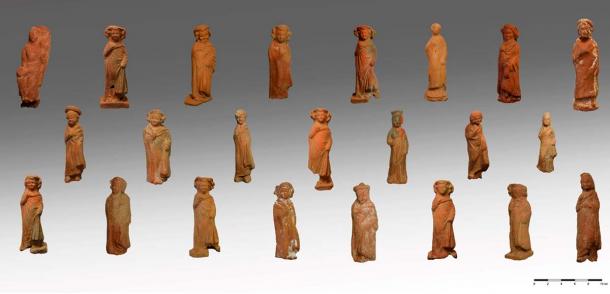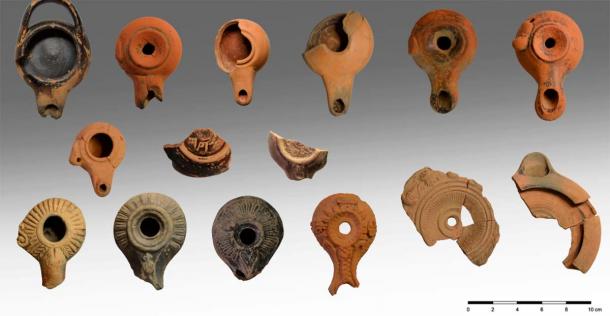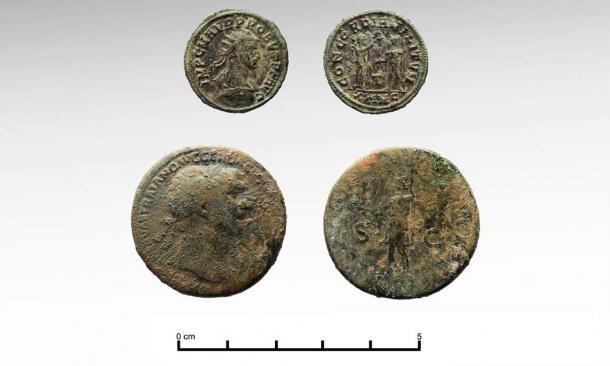
Myriad of Cultic Offerings Unearthed at Kythnos Temple Complex
The excavation of two small temples and a potential storeroom at Vryokastro on the Greek island of Kythnos has revealed a whopping 2,000 plus clay figurines, probably votive offerings left over several centuries. Dated to the 7th century BC, the site was in use for about a 1,000 years, and has been the subject of an archaeological project by the Greek cultural ministry. The figurines depict women and children mainly, but also, tortoises, lions, pigs, and birds.
Cult Worship at Kythnos
The pottery vessels unearthed at the site have been linked to the worship of Demeter, the goddess of agriculture, with her daughter Persephone. Imported pottery from other parts of Greece have also been found, including ornate lamps, and fragments of vases thought to have been used in worshipping Demeter and Persephone.
The vases indicate a possible link between the sanctuary site on Kythnos with Eleusis, a comprehensive site near Athens, where Demeter and Persephone are known to have been worshipped, reports The Associated Press.

An aerial view of the temple complex at Kythnos. In the center is the sanctuary of Demeter and Koris. (Greek Culture Ministry)
A Treasure Trove of Artifacts: Religious Worship and Kythnian Culture
At the heart of the excavation effort lies the temple dedicated to Demeter and Kori, which proved to be a veritable treasure trove of artifacts. Adjacent to these sacred structures, military installations were uncovered on the southern side of the acropolis, serving as a reminder of the strategic importance of Kythnos throughout its history. Notably, these military facilities were once garrisoned by troops under the command of King Philip V of Macedon around 201 BC.
The diverse array of artifacts discovered span the Archaic, Classical, and Hellenistic periods. They depict a myriad of subjects, including women, children, and to a lesser extent, men. The figurines offer a glimpse into the daily lives, cultural practices, and artistic sensibilities of the ancient Kythnian inhabitants, reports The Greek City Reporter.
- The Money Pit Mystery and Early Treasure Hunting on Oak Island
- Sanctuary of the Mysterious ‘Great Gods’ on the Island of Samothrace

Many of the figurines were intact after years in the ground. (Greek Culture Ministry)
In addition to human figures, animal figurines also made their appearance, with depictions ranging from endearing piglets and graceful turtles to majestic lions, formidable rams, and graceful birds.
Lighting vessels and lamps were also discovered at the Kythnos site, with unique shapes and designs. These shed light, both literally and metaphorically, on the rituals and daily routines of the ancient residents. Some of the vessels exhibit ornate patterns, suggesting their use in religious ceremonies, while others displayed more utilitarian features that helped illuminate the city’s homes and streets.
- Ancient Greek Science and Technology – From Antikythera to Pharos
- Ten Spectacular Golden Treasures of the Ancient World

Clay lamps of archaic, classical and Hellenistic times. (Greek Culture Ministry)
Ceramics also played a significant role in the material culture of ancient Kythnos, with well-preserved pottery a part of the finds. Among the findings were examples of the iconic ancient Greek red and black figure pottery style. Archaeologists note that the discovery of ceramics adds to the growing knowledge base of aesthetics, symbols, and functional aspects of these objects.
A diverse range of coins were also discovered, that have provided some insight into the monetary system of the ancient city, both Greek and Roman coinage and numismatics. These are strong reminders of the economic interactions and trade networks of the Kythnos.
The coins include a coin from Trajan's reign, minted around 106 AD, as well as a coin featuring the image of Diocletian, minted around 285 AD. The most intriguing discovery is a silver Kythnian coin, distinct from previous findings, featuring the head of Apollo on the obverse and a lyre on the reverse!

Bronze Roman coins (Trajan's sestertius, after 106 AD, below, and Diocletian's coin of 285 AD, above). (Greek Culture Ministry)
Vryokatos Kythnos Excavation Program at the Kythnos Site
Under the guidance of Professor Alexandros Mazarakis Ainianos and Dr. Dimitris Athanasoulis, the Vryokastro Kythnos excavation program (2021-2025) has embarked on a journey through the remnants of the city's acropolis. Collaborating with various government and non-government organizations, the team, comprised of archaeologists, architects, conservators, zooarchaeologists, and students from the University of Thessaly and France, has painstakingly sifted through layers of history.
Spanning a broad spectrum of time from the Archaic to Roman periods, the findings at the Kythnos archaeological site offer an intriguing glimpse into the city's evolution over centuries. Among the numerous extraordinary artifacts unearthed, one can marvel at the exquisite figurines, coins, lighting vessels, lamps, drinking vessels, and ceramics, each with its own story to tell.
The ancient city of Kythnos thrived from the 12th century BC until the 7th century AD, and the recent archaeological discoveries provide tangible evidence of its extensive habitation throughout the ages. In 2021, the research team focused their attention on the structural remains located atop the city's acropolis, unearthing captivating remnants from a range of ancient Greek periods, including the Archaic, Classical, Hellenistic, and Roman eras.
Top image: Clay figurines of boys and girls found during an excavation on the Greek island of Kythnos. Source: Greek Culture Ministry
By Sahir Pandey
References
AP. 2023. Greek island temple complex reveals 'countless' offerings left by ancient worshippers. Available at: https://news.yahoo.com/greek-island-temple-complex-reveals-162349671.html.
Gale, A. 2023. Thousands of Ancient Items Discovered at Kythnos Island, Greece. Available at: https://greekreporter.com/2023/06/07/ancient-items-kythnos-island-greece/.















